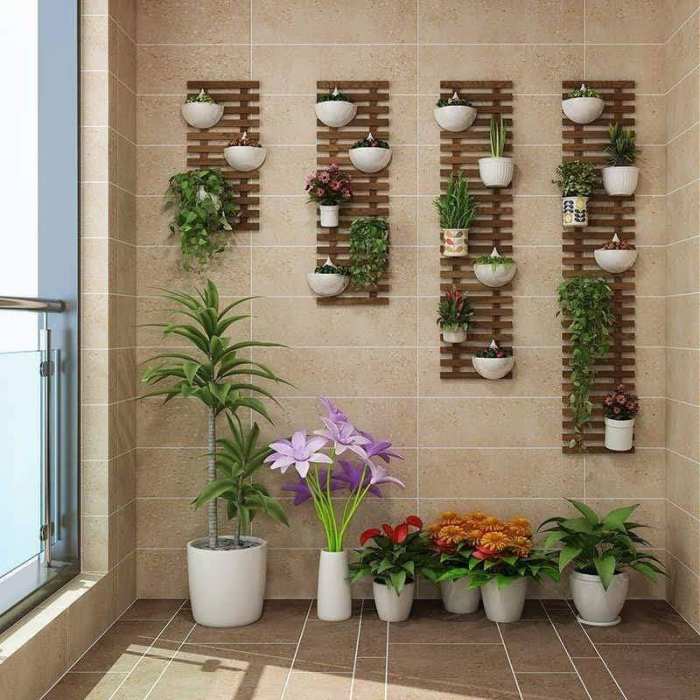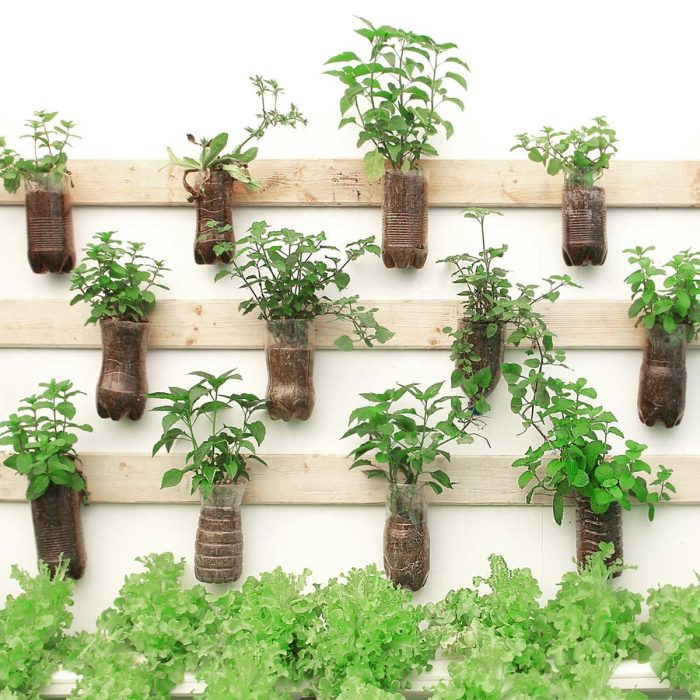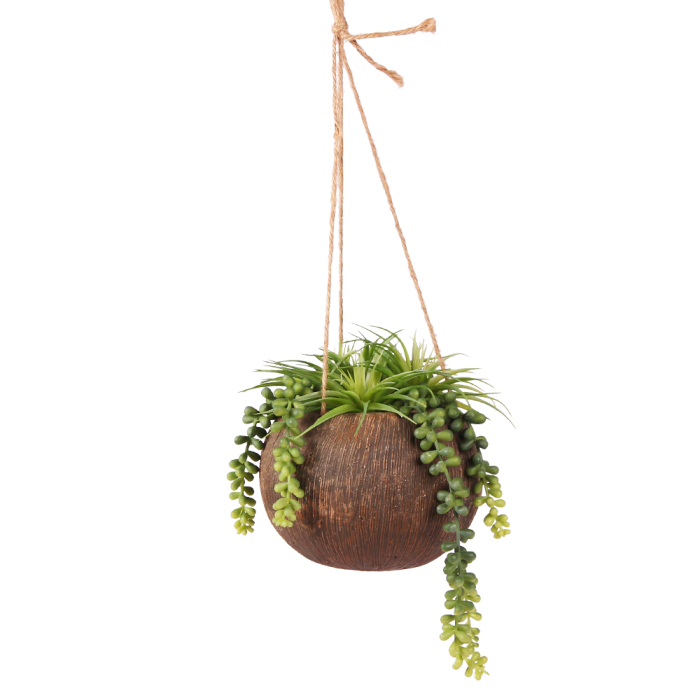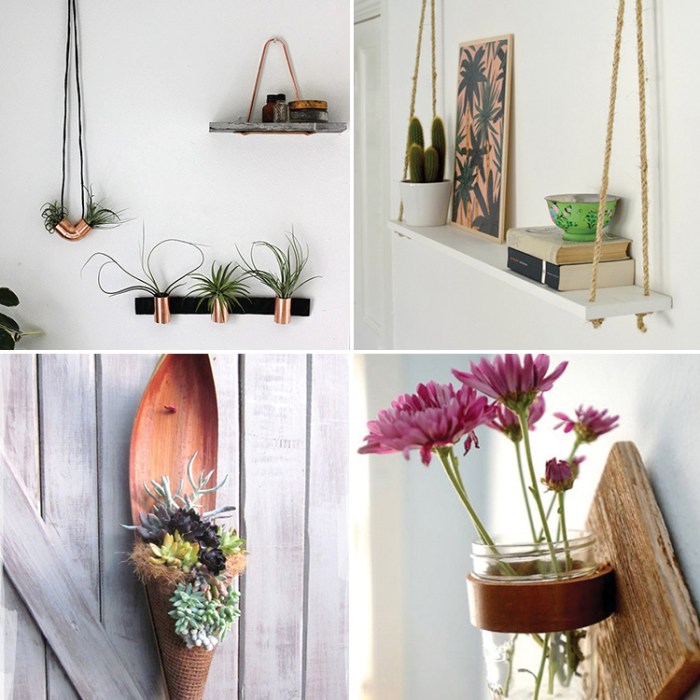Hanging plants from wall is an art form that combines aesthetics and functionality. By mounting plants on walls, you can create a lush, vertical garden that adds life and color to your home while purifying the air and improving your mood.
In this guide, we’ll explore the different ways to hang plants from walls, the best plants to choose, and how to care for them. We’ll also provide tips on creating a beautiful vertical garden that will be the envy of your friends.
Mounting Options

Suspending plants from walls adds a touch of greenery and freshness to indoor spaces. To ensure secure and aesthetically pleasing displays, various mounting options are available, each with its advantages and considerations.
Brackets
Brackets are sturdy supports designed to hold hanging planters against walls. They come in different shapes and sizes, allowing for customization based on the weight and size of the plant. Brackets typically have a weight capacity of up to 50 pounds, making them suitable for larger planters and trailing plants.
Hooks
Hooks are versatile and easy-to-install mounting options for lighter hanging plants. They come in various styles, including single, double, and S-shaped hooks, and can be screwed or nailed into walls. However, it’s crucial to consider the weight capacity of the hook, as some may not be suitable for heavier planters.
Shelves
Shelves offer a more permanent and decorative way to display hanging plants. They can be mounted at different heights and depths, creating a layered effect. Shelves are particularly suitable for displaying multiple plants or larger planters that require more support.
However, they may require additional reinforcement for heavier loads.
Plant Selection
Hanging plants are a captivating addition to any room, adding a touch of greenery and vitality to vertical spaces. When selecting plants for wall-hanging, it’s crucial to consider characteristics that make them suitable for this purpose.
Trailing or Cascading Foliage
Plants with trailing or cascading foliage are ideal for hanging from walls. Their long, flowing stems and lush leaves create a graceful and visually appealing display. Trailing plants like pothos, ivy, and spider plants are excellent choices.
Popular Hanging Plant Species
- Pothos:Low-maintenance plant with trailing vines and heart-shaped leaves; tolerates low light.
- Ivy:Hardy plant with cascading stems and small, glossy leaves; prefers indirect sunlight.
- Spider Plant:Easy-to-grow plant with arching foliage and long, trailing runners that produce plantlets.
- Philodendron:Versatile plant with a variety of leaf shapes and sizes; some species prefer bright, indirect light.
- Ferns:Lush, delicate plants with fronds that cascade gracefully; require higher humidity.
Complementing Wall Decor
When choosing hanging plants, consider the color and décor of the wall they will be placed on. Dark-leaved plants like pothos and philodendron contrast well with light-colored walls, while variegated or light-leaved plants like spider plants and ferns complement darker walls.
Hanging plants from walls can bring life and freshness to any indoor space. If you’re looking for a way to create a more lush and inviting environment, consider using hanging plants enclosures . These enclosures provide a secure and stylish way to display your plants, while also helping to improve air quality.
Whether you’re a seasoned plant enthusiast or just starting out, hanging plants from walls is a great way to add a touch of nature to your home.
Matching plant colors to the décor can create a cohesive and stylish look.
Hanging plants from the wall can add a touch of greenery and life to any room. For those looking for a stylish and practical way to display their plants, hanging wall pots from Bunnings offer a wide selection of options.
These pots are designed to be both decorative and functional, with a variety of shapes, sizes, and materials to choose from. Whether you’re looking for a simple pot to hold a single plant or a more elaborate arrangement, hanging wall pots from Bunnings are sure to have something to suit your needs.
They can be used to create a vertical garden, add a splash of color to a bare wall, or simply bring the outdoors in.
Vertical Garden Design: Hanging Plants From Wall
Vertical gardens using hanging plants offer a unique way to add greenery and visual interest to indoor spaces. By following a few principles, you can create stunning displays that bring nature indoors and enhance the ambiance of any room.
Arranging Plants for Maximum Impact, Hanging plants from wall
To achieve maximum visual impact, consider the following tips when arranging plants:
- Create a Focal Point:Select a few larger or more eye-catching plants to serve as focal points and anchor the display.
- Layer Plants for Depth:Hang plants at varying heights to create depth and dimension. Place taller plants in the back and smaller plants in the front.
- Consider Plant Shapes:Choose plants with different shapes and textures to add visual interest. Trailing plants, such as pothos or spider plants, can soften the edges of the display, while upright plants, like snake plants or ZZ plants, add structure.
- Use a Variety of Colors:Incorporate plants with different foliage colors, from vibrant greens to variegated shades, to create a dynamic display that draws the eye.
Lighting Considerations

Lighting is paramount for the well-being of hanging plants. Plants utilize light for photosynthesis, the process that converts light energy into chemical energy for growth and sustenance. Different plant species have varying light requirements, and providing appropriate illumination is crucial for their health and vitality.
Hanging plants from the wall is an easy way to add a touch of greenery to your home. If you’re looking for a way to add some vertical interest to your space, hanging plants are a great option. There are many different ways to hang plants from the wall, so you can find a style that fits your taste.
You can use hanging plants cad block free download to create your own unique design. Hanging plants from the wall is a great way to add some life to your home.
Natural light, particularly sunlight, is the optimal light source for most plants. However, not all indoor spaces receive adequate natural light, especially in rooms with north-facing windows or limited direct sunlight. In such cases, supplementing with artificial light becomes necessary.
Artificial Light Sources
- Fluorescent Lights:These lights emit a cool, bluish light that is suitable for low-light plants like ferns and spider plants.
- Incandescent Lights:Incandescent bulbs produce a warm, reddish light that mimics natural sunlight. They are suitable for plants that require higher light intensity, such as succulents and cacti.
- LED Grow Lights:LED grow lights are specifically designed for plant growth and emit a spectrum of light that is tailored to the needs of plants. They are energy-efficient and long-lasting.
Natural Light Exposure
- Maximize natural light exposure by placing hanging plants near windows or skylights.
- Use sheer curtains or blinds to filter sunlight and prevent scorching.
- Consider rotating plants regularly to ensure even light distribution.
Optimal Light Intensity and Duration
The optimal light intensity and duration for plants vary depending on the species. As a general guideline:
- Low-light plants:50-100 foot-candles (fc) for 12-14 hours per day
- Medium-light plants:100-200 fc for 14-16 hours per day
- High-light plants:200-400 fc for 16-18 hours per day
Care and Maintenance

Hanging plants require specific care to thrive in their elevated environment. Regular watering, fertilizing, and pruning are essential for their health and longevity.
Watering schedules should be adjusted based on the plant’s growth rate, size, and environmental conditions. Overwatering can lead to root rot, while underwatering can cause wilting and leaf loss.
Fertilizing
Fertilize hanging plants regularly during the growing season to provide essential nutrients. Choose a balanced liquid fertilizer and dilute it to half strength before applying it to the soil.
Pruning
Regular pruning encourages healthy growth and prevents the plant from becoming leggy. Remove dead or damaged leaves and stems, and trim back any excessive growth to maintain a desired shape.
Troubleshooting Common Problems
Hanging plants may face common problems such as yellowing leaves, pests, or stunted growth. Yellowing leaves can indicate overwatering, underwatering, or nutrient deficiency. Pests can be controlled with insecticidal soap or neem oil.
Final Wrap-Up

Hanging plants from wall is a great way to add life and color to your home, while also improving your air quality and mood. By following the tips in this guide, you can create a beautiful vertical garden that will be the envy of your friends.
FAQ Compilation
What are the best plants for hanging from walls?
The best plants for hanging from walls are those with trailing or cascading foliage, such as pothos, philodendron, and spider plants. These plants will naturally grow down the wall, creating a beautiful effect.
How do I hang plants from walls?
There are several different ways to hang plants from walls, including using brackets, hooks, and shelves. The best method for you will depend on the weight of the plant and the type of wall you have.
How do I care for hanging plants?
Hanging plants require the same care as other indoor plants, including watering, fertilizing, and pruning. However, it is important to make sure that the plants are getting enough light and that the soil is not too wet or too dry.